Feminists We Love: Carol Anshaw
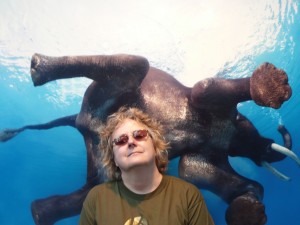 Born and raised in Chicago, I find myself perpetually drawn to writers who live and work there—and who make the city a character in their stories. I’ve been reading Chicagoan Carol Anshaw’s work for years, having discovered her through the novel Aquamarine.
Born and raised in Chicago, I find myself perpetually drawn to writers who live and work there—and who make the city a character in their stories. I’ve been reading Chicagoan Carol Anshaw’s work for years, having discovered her through the novel Aquamarine.
In that book, 17-year old Jesse Austin misses a chance for Olympic gold after being seduced and discarded by a rival. The novel unfolds through different variations of Jesse’s life, each compelling and fully imagined. The idea that our choices shape our lives is not new, of course. But in Anshaw’s gifted hands, this idea is beautifully and freshly realized. Jesse is a deeply engaging, flawed human being. Through the years, I’ve circled back to Aquamarine and recently shared it with my oldest daughter, who is an avid swimmer. Sometimes, when I’m floating in our pool, I recall Jesse and marvel at the unexpected zigzags most of us navigate to be here now.
In Seven Moves, Anshaw’s second novel, Chicago therapist Christine Snow attempts to find her lover who has disappeared, possibly to Morocco. The book, with a mystery at its core, provokes questions about whether we can truly know the people we love. Anshaw’s most recent novel, Carry the One, is her most acclaimed yet. A New York Times bestseller, the novel charts siblings Carmen, Alice, and Nick as they move on after an accident they’re involved in claims a young woman’s life. Here, “carry the one” refers to the dead girl left behind; the absent girl whose presence is always with them. Michiko Kakutani described the book as “beautifully observed,” while Entertainment Weekly invoked the terms “splendid, seductive [and] vivid.” USA Today wrote, “Carol Anshaw is one of those authors who should be a household name.”
In recent years, this award-winning writer has also turned to visual art, painting and exhibiting delightful, sly portraits of Vita Sackville-West and her associates. On Anshaw’s website, she notes, “I am hoping I have made a small biography in paint.” With this interview, I hope I have made a small biography of a writer who deserves to be a household name.
Monica: Let’s start with feminism. What does it mean to you, and how does it manifest in your life and work?
Carol: It’s central to who I am. I’m bewildered that it isn’t central to every woman. Of course, I have the luxury of being queer. If I were straight, I might have more daily battles to fight. I might come up against matters like four-inch heels and wondering if, to be truly attractive, I need to get nail extensions. But I opted out of that paradigm. I hate seeing the erosion of Roe v. Wade and the attack on contraceptives. I mean, contraceptives? Really? Rights my generation fought for are being taken back by the Religious Right. The thing to remember about rights is that they’re always only tenuously held. You have to keep checking that your grip is firm.
In my work, I write a lot about women who are trying—to matter, to make lives they can be proud of, to change their part of the world for the better. I hope the feminism in my writing speaks for itself.
Monica: Your bio says you divide your time between Chicago and Amsterdam. Any particular reason you picked Amsterdam, other than it’s lovely and progressive and has gorgeous art?
Carol: That about sums it up. Lovely to a fault, progressive, full of museums. My partner and I went there as tourists a few years back, and practically on the way in from the airport, she said, “I want to live here.” She’s a very powerful person and she made that happen for us. Now, even when I’m not there, part of me always is. We have a really simple life there. A small apartment on a canal. We know hardly anyone (as opposed to in Chicago, where I’ve lived forever and know a thousand wonderful, distracting people). We ride our bikes everywhere. I get so much writing done, sitting overlooking the boats on the water. And I read late into the night, the way I did as a teenager. Even at 3 am, I can hear someone on a bike clattering by on the cobblestones beneath my window.
Monica: Chicago is my beloved (and much missed, except for the bitter cold) hometown, and it always seemed to me to be a writer’s dream. How does living in Chicago fuel your creativity?
Carol: Well, your affection for Chicago might’ve been a little dampened this past winter. I think why I love it here so much has nothing to do with my writing. It’s about being part of a culture that’s hip but not overly impressed with itself (this is also true of Amsterdam). Chicago is backyard parties with cold beers and jello mold with pretzels inside and sometimes porch collapses. It’s also about being near the water. I am only a few streets over from Lake Michigan. I can ride my bike along the lake all the way downtown, where I teach. Most mornings I take my dog to the dog beach, which is larger than a football field. Chicago is a city that gave this much space to dogs.
Monica: You’ve written a great deal about family, including mother-daughter relationships, friendships, and romantic love entanglements. Are there ways your own experiences—as daughter, partner, friend—find their way into your stories? If so, how?
Carol: Every writer filters the world as they see it into their work. That said, I am so not interested in writing memoir. It is much easier to make up characters than use real people. The topics you mention are those of the novel of manners, and I guess I see myself as a contemporary practitioner of that craft. I particularly like demonstrating the many ways humans get themselves in trouble. Maybe I could say trouble is my main subject.
Monica: Do you have writing rituals? What does a day in the writing life of Carol Anshaw look like?
Carol: I’ve always wished I had an interesting answer to that. Something involving a cup of gunpowder tea and a songbird outside my open window. But I don’t. A writing day for me involves going to my writing studio, which has no Internet or candy. I pace around, have my lunch too early, take a power nap, then maybe get a page or two written. Maybe a thousand days like this and I have a book. It’s very unglamorous and inefficient.
Monica: I first read Aquamarine many years ago, and it’s a story I’ve come back to again and again. What did it mean to you to create a novel in which your character can have different possible lives? Is there a whiff of autobiography here?
Carol: Oh, I think everyone wonders what life they’d be living if they’d made this or that different decision early on, moved here or there, took this job or that one, met up with this partner or someone else entirely. I just took that idea and ran with it. I remember wondering why no writer had ever done it before. I still really love that book. I am happy to be its author.
Monica: You’ve received tremendous attention and kudos for your novel Carry the One, which is about friendship, love, and the long reach of trauma. Tell us about the origins of this story, and what you hoped to accomplish.
 Carol: Every novel I’ve written has several stories within it, so the book never comes to me all at once. I start with a couple of characters and an idea, then add from there. My initial impulse was to write a book in which time, lots of it, is a major player. The ways it changes (and doesn’t change) people. So I wrote a book spanning 25 years. I doubt I’ll ever take on that particular challenge again. The novel I’m working on now covers about six months. Still, it’s already unruly.
Carol: Every novel I’ve written has several stories within it, so the book never comes to me all at once. I start with a couple of characters and an idea, then add from there. My initial impulse was to write a book in which time, lots of it, is a major player. The ways it changes (and doesn’t change) people. So I wrote a book spanning 25 years. I doubt I’ll ever take on that particular challenge again. The novel I’m working on now covers about six months. Still, it’s already unruly.
Monica: One of your characters in Carry the One is a painter, as are you. Does Alice represent you in whole or in part?
Carol: Maybe a little. I’ll leave it there.
Monica: Do you ever write in other genres, such as poetry, hybrid, experimental writing?
Carol: None of the above. I am already overwhelmed by what I do.
Monica: Do you have a favorite character in fiction, your own or somebody else’s?
Carol: My favorite character in my own fiction is Hallie Butts, the godmother in Aquamarine. Also Harold, the brother in Lucky in the Corner. These characters come out of my longing for people like them in my life. They are unmet friends. In another author’s work it would be Anil in Michael Ondaatje’s Anil’s Ghost. She is a fascinating sort of character, courageous and resolute. I love that book.
You didn’t ask me my favorite character on an addictive TV series, but I will tell you it is Elizabeth, the wife and mom in Maryland who is also a covert KGB killer in “The Americans.” She makes the peanut butter sandwiches for the kids, then rushes up to her big world radio (the series is set in the 1980s) and takes down a coded message, then rushes off in one of her million wigs to kill a foreign minister in a hotel pool. She’s an inspirational model of multi-tasking. Also, don’t mess with her.
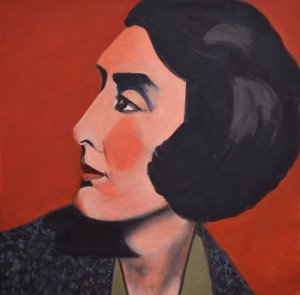 Monica: I’m fascinated by your paintings of Vita Sackville-West. Can you tell us how you came to be painting her and fragments of her life, including her relationship with Virginia Woolf? And does the wonderful “Vita and Carol Talk Across Time” speak to a desire to commune with her?
Monica: I’m fascinated by your paintings of Vita Sackville-West. Can you tell us how you came to be painting her and fragments of her life, including her relationship with Virginia Woolf? And does the wonderful “Vita and Carol Talk Across Time” speak to a desire to commune with her?
Carol: She’s a fascinating combination of aristocratic and queer and aspirational (as a writer). Behind the scrim of her marriage and her motherhood, she seduced woman after woman, including Virginia Woolf, then gently set them aside to go on to the next. She ruined the marriages and relationships of a lot of lovers, and didn’t seem to have a drop of rue or regret about all that. I wouldn’t describe her as a good person, but she is fiercely interesting to me, as is the period of her life I was painting, the 1920s and 1930s.
A ways into making these paintings a very nice (and out-of-the-box thinker) art professor from Rockford University asked if they could put up a solo show of my Vita paintings. Absolutely, but that meant putting pedal to the metal for several months. I got the idea that it would be fun to paint a small portrait of each of her lovers. I had about five, then painted maybe five more, then kept coming across more and had to paint them, too. I have 13 now. There were a couple I couldn’t find images of, so when I do, I will add them. One she seduced off the garden tour at her castle. A castle helps, I think, when you are into seduction.
As for the painting of us talking across time, since she apparently hit on every woman she got onto her sofa, I’d feel a little slighted if she wasn’t hitting on me in that painting. My title for it is, “Well, you know Carol, I really loved them all.” I have the paintings up on my blog and on my Facebook page.
Monica: Writing and painting are both generative activities. What does painting allow you to represent, feel, convey that writing doesn’t? And/or vice versa?
Carol: Writing is hard work for me. Painting is a whole other sort of activity. It engages me in a way that’s not about thought. I listen to rock while I’m painting. I could never do that with writing. I’d say it’s a rest stop on the writing road. A rest stop with a panoramic view.
Monica: Much has been made, by VIDA and others, of statistical inequities between men and women in publishing, particularly in terms of whose books are reviewed. What are your thoughts about the gendered (and racialized) politics of publishing?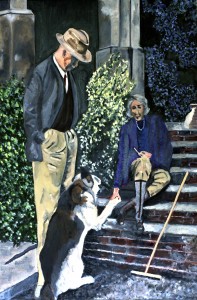
Carol: I can’t say I’ve noticed any short shrift in terms of women’s books getting reviewed. But men do seem to be an unduly large presence in literary and intellectual magazines. Other women writers have noted this imbalance before me. As for attention to my own writing, I think I have been hurt more by being queer than by being a woman.
Monica: What are you working on now?
Carol: I’m in the middle of a new novel. I’m also working on a new story. With my stories I’m trying for a very agile form of movement. Stories that move in a way I haven’t seen before. And I’m making a series of paintings I’m calling Outskirts of America.
Monica: What advice would you give to a young writer?
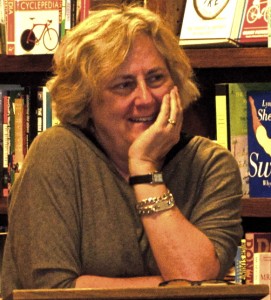 Carol: Unless she is unusually lucky, it’s going to take longer than she can imagine to write well. Longer still to write extremely well. Maybe even longer to be recognized as a good writer. She will encounter rejection at every level. She will probably make very little money. Basically, she will have to love writing for itself, for what she can make words do.
Carol: Unless she is unusually lucky, it’s going to take longer than she can imagine to write well. Longer still to write extremely well. Maybe even longer to be recognized as a good writer. She will encounter rejection at every level. She will probably make very little money. Basically, she will have to love writing for itself, for what she can make words do.

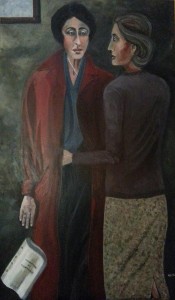
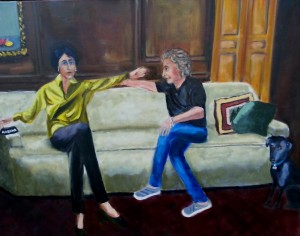
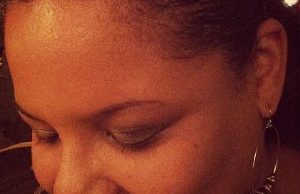
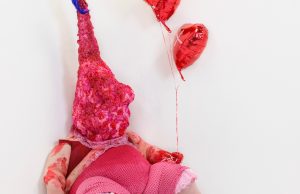
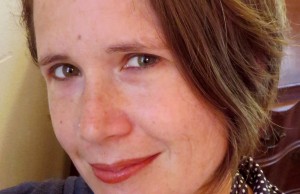
0 comments